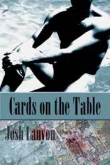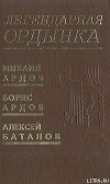
Текст книги "Port Arthur town of Knights of Round Table (СИ)"
Автор книги: Инна Тигги
Жанр:
Биология
сообщить о нарушении
Текущая страница: 3 (всего у книги 4 страниц)
During their dominion
Merv, like Samarkand and Bokhara,
was one of the great schools of learning,
and the celebrated historian
Yaqut
studied in its libraries.
Merv produced a number of scholars in various branches of knowledge,
such as Islamic law, Hadith, history, literature, and the like.
Several scholars have the name:
"Marwazi" designating them as "hailing from Merv".
But Saffarid rule was brief and they were defeated by Samanids in 901.
Samanids weaked after second half of 10th century and Ghaznavids took present Turkmenistan in 990s. But, they challenged with Seljuks, newcomers from north. Seljuks' decisive victory against them, present Turkmenistan was passed to them in 1041.
Oghuz tribes
The origins of the Turkmen may be traced back to the
Oghuz confederation
of nomadic pastoral tribes
of the early Middle Ages,
which lived in present-day Mongolia and around Lake Baikal in present-day southern Siberia.
Known as the Nine Oghuz, this confederation was composed of Turkic-speaking peoples who formed the basis of powerful steppe empires in Inner Asia.
In the second half of the 8th century, components of the Nine Oghuz migrated through Jungaria into Central Asia, and Arabic sources located them under the term Guzz in the area of the middle and lower Syrdariya in the 8th century.
By the 10th century, the Oghuz had expanded west and north of the Aral Sea and into the steppe of present-day Kazakhstan, absorbing not only Iranians but also Turks from the Kipchak and Karluk ethnolinguistic groups.
In the 11th century, the renowned Muslim Turk scholar Mahmud al-Kashgari described the language of the Oghuz and Turkmen as distinct from that of other Turks and identified twenty-two Oghuz clans or sub-tribes, some of which appear in later Turkmen genealogies and legends as the core of the early Turkmen.
First mention of Oghuz goes back to the time prior to the Göktürk state– there are references to the Sekiz-Oghuz («eight-Oghuz») and the Dokuz-Oghuz («nine-Oghuz») union.
The Oghuz Turks under Sekiz-Oghuz and the Dokuz-Oghuz state formations ruled different areas in the vicinity of the Altay Mountains.
During the establishment of the Göktürk state, Oghuz tribes inhabited the Altay mountain region and also lived along the Tula River. They also formed as a community near the Barlik river in present-day northern Mongolia.
Oghuz expansion by means of military campaigns went at least as far as the Volga River and Ural Mountains, but the geographic limits of their dominance fluctuated in the steppe areas extending north and west from the Aral Sea.
Accounts of Arab geographers and travelers portray the Oghuz ethnic group as lacking centralized authority and being governed by a number of «kings» and «chieftains.»
Because of their disparate nature as a polity and the vastness of their domains, Oghuz tribes rarely acted in concert. Hence,
by the late 10th century, the bonds of their confederation began to loosen. At that time, a clan leader named Seljuk founded a dynasty and the empire that bore his name on the basis of those Oghuz elements that had migrated southward into present-day Turkmenistan and Iran.
The Seljuk Empire was centered in Persia, from which
Oghuz groups
spread
into Azerbaijan and Anatolia.
After the fall of Göktürk kingdom, Oghuz tribes migrated to the area of Transoxiana, in western Turkestan, in modern Kazakhstan and Kirghizstan. This land became known as the «Oghuz steppe» which is an area between the Caspian and Aral Seas.
Ibn al-Athir,
an Arab historian,
stated that the
Oghuz Turks had come to Transoxiana in the period of the caliph Al-Mahdi in the years between 775 and 785.
[[[ Athir – Athur – Arhur (???)]]]
In the period of the Abbasid caliph Al-Ma'mun (813-833), the name Oghuz starts to appear in the Islamic historiography. By 780 AD, the eastern parts of the Syr Darya were ruled by the Karluk Turks and the western region (Oghuz steppe) was ruled by the Oghuz Turks.
The name Turkmen first appears in written sources of the
10th century to distinguish those
Oghuz groups who migrated south into the Seljuk domains and accepted Islam from those that had remained in the steppe. Gradually, the term took on the properties of an ethnonym and was used exclusively to designate Muslim Oghuz, especially those who migrated away from the Syrdariya Basin. By the 13th century, the term Turkmen supplanted the designation Oghuz altogether. The origin of the word Turkmen remains unclear. According to popular etymologies as old as the 11th century, the word derives from Turk plus the Iranian element manand, and means "resembling a Turk." Modern scholars, on the other hand, have proposed that the element man /men acts as an intensifier and have translated the word as "pure Turk" or "most Turk-like of the Turks."
Seljuks
In the 11th century, Seljuk domains stretched from the delta of the Amu Darya delta into Iran, Iraq, the Caucasus region, Syria, and Asia Minor. In 1040 the Seljuk Turks crossed the Oxus from the north, and having defeated Masud, sultan of Ghazni, raised Toghrul Beg, grandson of Seljuk, to the throne of Iran, founding the Seljukid dynasty, with its capital at Nishapur. A younger brother of Toghrul, Daud, took possession of Merv and Herat. Toghrul was succeeded by his nephew Alp Arslan (the Great Lion), who was buried at Merv. It was about this time that Merv reached the zenith of her glory. In 1055 Seljuk forces entered Baghdad, becoming masters of the Islamic heartlands and important patrons of Islamic institutions. Until these revolts, Turkmen tribesmen were an integral part of the Seljuk military forces. Turkmen migrated with their families and possessions on Seljuk campaigns into Azerbaijan and Anatolia, a process that began the Turkification of these areas. During this time, Turkmen also began to settle the area of present-day Turkmenistan. Prior to the Turkmen habitation, most of this desert had been uninhabited, while the more habitable areas along the Caspian Sea, Kopetdag Mountains, Amu Darya, and Murgap River (Murgap Deryasy) were populated predominantly by Iranians.
The city-state of
Merv
was an especially large sedentary and agricultural area, important as both a regional economic-cultural center and a transit hub on the Silk Road.
The last powerful Seljuk ruler, Sultan Sanjar (d. 1157), witnessed the fragmentation and destruction of the empire because of attacks by Turkmen and other tribes. During the reign of Sultan Sanjar or Sinjar of the same house,
in the middle of the 11th century,
Merv
was overrun by the Turkish tribes of the Ghuzz from beyond the Oxus. It eventually passed under the sway of the rulers of Khwarizm (Khiva). After mixing with the settled peoples in Turkmenistan, the Oguz living north of the Kopet-Dag Mountains gradually became known as the Turkmen.
The Seljuk empire broke down in the second half of the 12th century, and the Turkmen became independent tribal federation.
Mongols and Timurids
In 1157, the rule of Seljuks dynasty came to an end in the province of Khorasan. The Turkic rulers of Khiva took control of the area of Turkmenistan, under the title of Khwarezmshahs in 1221, central Asia suffered a disastrous invasion by Mongol warriors who swept across the region from their base in eastern Asia."
"Under their commander,
Genghis Khan, founder of the Mongol Empire, the Mongols conquered Khwarezm and
burned the city of Merv to the ground.
The Mongol leader ordered
the massacre of Merv's inhabitants
as well as
the destruction of the province's farms and irrigation works
which effectively ended the Iranian dominance in urban areas and agricultural communities of khwarezm.
These areas were soon repopulated by the Turkmen who survived the invasion and had retreated northward to the plains of Kazakhstan or westward to the shores of the Caspian Sea. After the division of the Mongol Empire, present Turkmenistan was passed to Chagatai Khanate except southernmost part was belonged to Ilkhanate.
Small, semi-independent states arose under the rule of the region's tribal chiefs later in the 14th century.
In the 1370s, Amir Timur (also known as Tamerlane), one of the greatest conquerors in human history, captured Turkmen states once more and established the short lived Timurid Empire, which collapsed after Timur's death in 1405, when Turkmens became independent once again."
(from Wikipedia)
....
........
*****
So, we are looking for a possibilty English/British Wizard Merlin had came on island England as a traveler Wizard from a town Merv.
Merv – Merlin (???)
We will see events in Merv town history:
https://en.wikipedia.org/wiki/Merv
From Wikipedia
"Merv
(Turkmen: Merw, Мерв; Persian: Marv),
formerly
Achaemenid Persian Satrapy of Margiana, and later
Alexandria (Margiana) and
Antiochia in Margiana,
was a major oasis-city in Central Asia,
on the historical Silk Road,
located near today's
Mary in Turkmenistan.
Several cities have existed on this site, which is significant for the interchange of culture and politics at a site of major strategic value.
The site of ancient Merv has been listed by UNESCO as a World Heritage Site. (See List of World Heritage Sites in Turkmenistan)
Merv
has prehistoric roots:
archaeological surveys have revealed many traces of village life as far back as
the 3rd millennium BC
and have associated the area culturally with
the Bactria-Margiana Archaeological Complex.
The geography of the
Zend-Avesta (commentaries on the Avesta) mentions
Merv (under the name of Mouru) along with
Balkh.
In Zoroastrianism,
the god Ahura Mazda created
Mouru as one of sixteen perfect lands.
Under the Achaemenid Empire (c. 550-330 BC),
the historical record mentions
Merv
as a place of some importance: under the name of
Margu
it occurs as part of one of the satrapies in
the Behistun inscriptions (ca. 515 BC) of the
Persian monarch
Darius Hystaspis.
The first city of
Merv
was founded
in the 6th century BC
as part of the
Achaemenid expansion into the region of
Cyrus the Great
(559-530 BC),
but later strata deeply cover the Achaemenid levels at the site.
Hellenistic era
Alexander the Great's visit
to
Merv is merely legendary,
but the city was named
Alexandria
after him for a time.
After Alexander's death
in 323 BC,
Merv
became the capital of the Province of Margiana of the Seleucid, Greco-Bactrian (256-125 BC), Parthian, and Sassanid states.
The Seleucid ruler
Antiochus Soter (reigned 281-261 BC)
renamed
Merv
as
Antiochia Margiana;
he rebuilt and expanded the city at the site presently known as
Gyaur Gala (Gäwürgala) fortress.
After the fall of the Seleucid dynasty, Bactria, Parthia, and the Kushans took control in succession.
Merv
was a major city of
Buddhist learning,
with
Buddhist monastery temples for many centuries
until its Islamicization.
At the site of Gyaur Kala and Bairam Ali Buddhism was followed and practised often at the local Buddhist stupas.
After
the Sassanid Ardashir I
(220-240 AD) took
Merv,
the study of numismatics picks up the thread:
the unbroken series of coins originally minted at Merv document a long unbroken direct Sassanian rule of almost four centuries.
During this period
Merv
was home to practitioners of various religions beside
the official Sassanid
Zoroastrianism, including
Buddhists,
Manichaeans, and
Christians of the Church of the East.
Between the 6th (553) and 11th centuries AD,
Merv
served as the seat of an
East Syrian metropolitan province,
key in
the Dualist church's mission
east up the Silk Road to Turkestan and China.
The Hephthalite (Hun) occupation
from the end of the 5th century to 565 AD
briefly interrupted Sassanid rule.
[ The city of Marv, Turkmenistan in the 4th century as shown on the Peutinger Map ]
the Peutinger Map
Peutinger Map
Tabula Peutingeriana ((ancient Roman road map) showing the layout of the cursus publicus, the road network of the Roman Empire.)
https://en.wikipedia.org/wiki/Tabula_Peutingeriana
Arab occupation and influence
Sassanian rule came to an end when the last Sassanian ruler, Yazdegerd III (632-651) was killed not far from the city and the Sassanian military governor surrendered to the approaching Arab army. Representatives of the caliph Umar occupied the city, which became the capital of the Umayyad province of Khorasan.
In 671
Ziyad ibn Abi Sufyan
sent 50,000 Arab troops to
Merv
as a colony.
This colony retained its native Kufan sympathies and became the nucleus of Khurasan.
Using the city as their base, the Arabs, led by Qutayba ibn Muslim
from 705 to 715, brought under subjection large parts of Central Asia, including
Balkh, Bokhara, and Fergana.
Merv, and Khorasan in general,
became one of the first parts of the Persian-speaking world
to become majority-Muslim.
Arab immigration to the area was substantial.
A Chinese captured at Talas,
Du Huan, was brought to Baghdad and toured the caliphate.
He observed that
in Merv,
Khurasan,
Arabs and Persians lived in mixed concentrations.
Merv
gained renewed importance
in February 748
when the Iranian general Abu Muslim (d. 755) declared a new
Abbasid dynasty
at Merv,
expanding and re-founding the city, and, in the name of the Abbasid line, used the city as a base of rebellion against the Umayyad caliphate.
After the Abbasids became established in Baghdad, Abu Muslim continued to rule Merv as a semi-independent prince until his eventual assassination. Indeed, Merv operated as the center of Abbasid partisanship for the duration of the Abbasid Revolution of 746-750, and later on became a consistent source of political support for the Abbasid rulers in Baghdad; the governorship of Khurasan at Merv was considered one of the most important political figures of the Caliphate.
The influential Barmakid family, based in Merv, played an important part in transferring Greek knowledge (established in Merv since the days of the Seleucids and Greco-Bactrians) into the Arab world.
Throughout the Abbasid era
(750-1258),
Merv
remained the capital and most important city of
Khurasan.
During this time,
the Arab historian
Al-Muqaddasi
(c. 945/946 – 991) called
Merv "delightful, fine, elegant, brilliant, extensive, and pleasant".
Merv's architecture perhaps provided the inspiration for the Abbasid re-planning of Baghdad.
The city was notable as a home for immigrants from the Arab lands
as well as for those
from Sogdia
and elsewhere in Central Asia.
In the period
from 813 to 818,
the temporary residency of
the caliph al-Ma'mun
effectively made
Merv
the capital of the Muslim world
and
highlighted Merv's importance to the Abbasids.
Merv
also became the center of a major
8th-century
Neo-Mazdakite movement led by al-Muqanna,
the "Veiled Prophet",
who gained many followers by claiming to be an incarnation of God and heir to Abu Muslim; the Khurramiyya inspired by him persisted
in Merv until the 12th century.
During this period
Merv,
like Samarkand and Bukhara, functioned as
one of the great cities of Muslim scholarship;
the celebrated historian
Yaqut (1179-1229) studied in its libraries.
Merv
produced a number of scholars in various branches of knowledge,
such as
Islamic law, hadith, history, and literature.
Several scholars
have the name
Marwazi
designating them as
hailing from Merv,
including the famous
Ahmad Ibn Hanbal
(780-855).
The city continued to have
a substantial
Christian community.
In 1009
the Archbishop of Merv
sent a letter to the Patriarch at Baghdad
asking that the Keraites be allowed to fast less than other
Nestorian Christians.
As the caliphate weakened,
Arab rule in Merv was replaced by that of the
Persian general Tahir b. al -Husayn and his
Tahirid dynasty in 821.
The Tahirids ruled
Merv
from 821 to 873,
followed by the Saffarids (873-),
then the Samanids
and later the Ghaznavids.
Turks in Merv
In 1037,
the Seljuks,
a clan of
Oghuz Turks
moving from the steppes east of the Aral Sea, peacefully took over
Merv under the leadership of Toghril Beg-the Ghaznavid sultan Masud was extremely unpopular in the city. Togrul's brother Çagry stayed in Merv as the Seljuk domains grew to include the rest of Khurasan and Iran, and it subsequently became a favorite city of the Seljuk leadership. Alp Arslan (Sultan: 1063-1072) and his descendant Sultan Sanjar (died 1157) were both buried at Merv.
During this period
Merv expanded to its greatest size-Arab and Persian geographers termed it
"the mother of the world", the "rendezvous of great and small", the "chief city of Khurasan" and the capital of the eastern Islamic world.
Written sources also attest to a large library and madrasa founded by
Nizam al-Mulk (Vizier: 1064-1092), as well as many other major cultural institutions.
Merv was "the best of the major cities of Iran and Khurasan" (Herrmann 1999).
Sanjar's rule, marked by conflict with the Kara-Khitai and Khwarazmians,
ended
in 1153 when
Turkish Ghuzz nomads from beyond the Amu Darya pillaged the city.
Subsequently,
Merv changed hands between the Khwarazmians of Khiva, the Ghuzz, and the Ghurids -
it began to lose importance relative to Khurasan's other major city,
Nishapur.
Mongols in Merv
In 1221
Merv opened its gates to Tolui, son of Genghis Khan, chief of the Mongols, on which occasion
most of the inhabitants are said to have been butchered.
The Persian historian Juvayni, writing a generation after the destruction of Merv, wrote
"The Mongols
ordered that, apart from four hundred artisans. ..,
the whole population,
including
the women and children,
should be killed, and no one, whether woman or man, be spared.
To each [Mongol soldier] was allotted the execution of three or four hundred Persians.
So many had been killed by nightfall that the mountains became hillocks, and the plain was soaked with the blood of the mighty."
Some historians[who?] believe that
over one million
people died in the aftermath of the city's capture,
including hundreds of thousands of refugees from elsewhere,
making it one of the most bloody captures of a city in world history.
Excavations revealed drastic rebuilding of the city's fortifications in the aftermath, but the prosperity of the city had passed.
The Mongol invasion spelt the eclipse of Merv and indeed of other major centres for more than a century.
After the Mongol conquest,
Merv
became part of the
Ilkhanate
and was consistently looted by
Chagatai Khanate.
In the early part of the 14th century
the town became the seat of a
Christian archbishopric of the Eastern Church
under the rule of the Kartids,
vassals of the Ilkhanids.
By 1380
Merv
belonged to the empire of Timur
(Tamerlane).
Uzbeks in Merv and its final destruction
In 1505
the Uzbeks occupied
Merv;
five years later Shah Ismail, the founder of the Safavid dynasty of Persia, expelled them.
In this period a Persian nobleman restored a large dam (the 'Soltanbent') on the river Murghab, and the settlement which grew up in the area thus irrigated became known as «Ba'yramaly», as referenced in some 19th-century texts.
Merv
remained in the hands of Persia
(except for periods of Uzbek rule between 1524 and 1528 and again between 1588 and 1598) until 1785, when Shah Murad, the Emir of Bokhara, captured the city.
A few years later,
in 1788 and 1789,
the Bukharan Manghit king,
Shah Murad Beg
razed the city to the ground,
broke down the dams,
and converted the district into a waste.
The entire population of the city and the surrounding oasis of
about 100,000
were then
deported in several stages to the Bukharan oasis and Samarkand region in the Zarafshan Valley.
Being nearly all Azerbaijani Turkish-speaking Shi'as from the Izzeddinlu branch of Qajar tribe, the deportees resisted assimilation into the Sunni population of Bukhara, despite the common language they spoke with most Bukharan natives.
These Marvis survive as of
2016 -
Soviet censuses listed them as
"Iranis/Iranians" through the 1980s.
They live in Samarkand as well as in Bukhara and in the area in between on the Zarafshan river.
...
Merv
is currently the focus of
the Ancient Merv Project
(initially as
the International Merv Project).
From 1992 to 2000, a joint team of archaeologists from Turkmenistan and the UK have made remarkable discoveries.
In 2001, a new collaboration was started between the Institute of Archaeology, University College London and the Turkmen authorities.
four cities; all of the sites are preserved in the
"Ancient Merv Archaeological Park"
just north of the modern
village of
Baýramaly (Ba'yramaly)
and thirty kilometers east of the large Soviet-built
city of
Mary
(Herrmann 1993)."
(from Wikipedia)
Resource
"Merv"
https://en.wikipedia.org/wiki/Merv
************
But as this was just my fantazy ideas about a possible versa of possible linguistic links between the ancient town Merv and name Merlin, Wizard Mervin in island England, a popular hero in legends about King Arthur,
I do not know the truth here, how this was, some others, probably, the some.
****
We will look popular versa about this all:
on Russian
«Мерлин»
https://ru.wikipedia.org/wiki/Мерлин
from Wikipedia
"Мерлин
(англ. Merlin,
валл. Myrddin,
валл. Myrddin Emrys,
валл.
Ann ap Lleian,
Annvab y llaian) – в британском цикле легенд,
мудрец и волшебник кельтских мифов,
наставник и советник короля Артура,
а также ранее его отца Утера и короля Вортигерна.
Кроме того, имя Мерлина встречается как эпитет в средневековой кельтской поэзии бардов.
Имя Мерлина связано с валл. Myrddin.
Валлийское имя возникло, вероятно, в связи с неправильной интерпретацией названия
города
Кармартен:
валл. Caerfyrddin.
Это название происходит от бриттского *
Mori-dunon
'морская крепость',
однако было позже понято как
Caer-Myrddin
(переход m в f (читается [v])
отвечает правилам валлийской грамматики),
то есть
"крепость Мирдина".
Латинский вариант
Merlinus
(римское название одной из соколиных пород)
появляется у
Гальфрида Монмутского.
Мерлин является повелителем зверей, и может принимать облик любого из лесных животных. Живущий в лесу отшельник в кельтских легендах отождествляется с богом Цернунном – покровителем леса, животных и волшебства.
Мерлин у Талиесина
Englynnion Y Bedeu
ST. 14.
"Bedd Ann ap Lleian ym newys
Vynydd, lluagor Hew Emmrys,
Priv ddewin Merddin Emmrys."
translated by Herbert Algernon:
"The grave of Ann ap Lleian in the electoral
Mount, the host-opening lion Ambrose,
The chief enchanter Merlin Ambrose."
translated by Mary Johnes:
"The grave of the nun's son on Newais:
Mountain of battle, Llew [lion of?] Emrys,
Chief Magician, Myrddin Emrys"
Общий приблизительный перевод:
"Могила
Анна сына Ллеиана
на Невайс Горе,
воинственного льва
Амвросия,
Вождя чародеев
Мерлина Амвросия"
Peniarth MS. 98B (1616?):
variant version of "Englynion y Beddau"
Мерлин
упоминается в сочинении, приписываемом
барду Талиесину
"Могилы воинов" (Englynnion Y Bedeu),
написанном трёхстишиями в форме "Englyn milwr".
Поэма содержится в
"Чёрной Книге из Кармартена".
Мерлину посвящена 14-я строфа, сохранившаяся в манускрипте
Peniarth 98B, в которой он фигурирует сразу под тремя именами:
Анн ап Ллейан (валл. Ann ap Lleian),
Амвросий (валл. Emmrys) и
Мерлин Амвросий (валл. Merddin Emmrys).
В первом имени «Lleian» можно перевести как «монахиня», таким образом, валл. Ann ap Lleian допустимо перевести как
"Анн, сын монахини", (англ. Ann son of the Nun).
Рождение и детство Мерлина
Происхождение Мерлина, как и жизнь, окутано мифами.
Согласно одним источникам, его мать была одной из чистейших и добрейших девушек за историю человечества, и зло никогда не рождалось в её душе. Дьявол искал путей к ней, но не находил.
Однажды её сестра, злая женщина и полная ей противоположность, пришла домой пьяной и начала несправедливо бранить и оскорблять сестру. Девушка разгневалась, открыв тем самым свою душу злу, и дьявол овладел ею. Так был зачат Мерлин.
Во время беременности она молила Бога, чтобы он помиловал её и ребёнка, а также обращалась за помощью-советом к своему духовнику-священнику Блезу.
Блез решил, что следует «окрестить Мерлина сразу по его рождении». Окрестив Мерлина, Блез уничтожил «всё тёмное наследие Мерлина», но у Мерлина остались необычайные «способности мудреца и провидца».
По иной версии той же легенды, мать Мерлина, монахиня Кармелис, однажды последовала на берег реки, и прилегла отдохнуть.
Злой дух, давно следивший за ней, воспользовался этим и, подлетев поближе, трижды клюнул Кармелис в ухо. Проснувшись, девушка почуяла недоброе и поспешила к монаху Блезу.
Услышав её рассказ, монах упрекнул Кармелис в неосторожности, сказав, что через 9 месяцев она родит ребёнка от Чёрного Духа.
Малыш родился покрытый шерстью, повергнув свою мать в ужас. Слыша, как она проклинает Чёрного Духа, младенец заговорил: «не бойтесь, матушка, я не причиню вам никакого зла». Вскоре к монахине пришел Блез и окрестив дитя, увидел, что шерсть с его тела исчезла.
Согласно другой легенде,
Мерлин родился в городе Уэльс в 500-х годах,
мать его была обычной девушкой, а отец волшебником.
С ранних лет маленький Мерлин старался волхвовать и пророчествовать. Ему повиновались все звери и птицы, а олени и филины часто были спутниками его игр. Мерлин был добрейшим мальчиком – всем помогал, давал советы. Он был полностью доволен жизнью, пока король Вортигерн не позвал его усмирить двух драконов. И тогда все окончательно поняли, что Мерлин – волшебник.
Ещё одна версия легенды, дохристианская, в которой говорится, что
Мерлин
был
внебрачным сыном одного из королей,
зачатым от ведьмы,
в легенде также упомянуто кровное родство
Мерлина и Морганы,
являвшейся его младшей сестрой
[[[Король Артур (King Arthur)
имел внебрачного сына
Mordred
от своей сводной сестры Морганы,
не зная ещё тогда, что она, Моргана, Morgana,
его сводная сестра (?)]]]
В кельтских легендах
есть упоминания о
Гвендид и Гвендалин,
сестре и жене Мерлина
Мерлин и Артур
Самым полным собранием эпизодов из легендарной жизни Мерлина обычно принято считать книгу сэра Томаса Мэлори «Смерть Артура». Мерлин является там наставником-ментором будущего короля Британии Артура, сына короля Утера Пендрагона и леди Игрэйн, который был зачат после смерти первого мужа Игрейн (согласно Мэлори) благодаря магической помощи Мерлина. За это волшебник забирает себе младенца и воспитывает его.
Когда Артур достиг возраста шестнадцати лет, Мерлин советует ему участвовать в состязании за древний меч в камне. По известному преданию, тому, кто сможет извлечь этот меч из камня, суждено объединить всю Британию (этот меч – ещё не Экскалибур, с которым его часто путают). Экскалибур попадает в руки Артуру в одном из следующих эпизодов – Мерлин чарами взывает к Владычице Озера, которая дарует Артуру Экскалибур. После смерти Артура меч возвращается Владычице Озера.
Смерть Мерлина описывается в эпизоде с Морганой – злой колдуньей, извечной противницей рыцарей Круглого Стола. Она околдовывает Мерлина, погружая его в вечный сон, выведав его тайны с помощью девушки Нимуэ. Согласно легенде, Мерлин спит где-то под холмом вечным сном, но ещё может проснуться. По другой легенде, злая колдунья Моргана заточила Мерлина в могучий дуб, где он и умер.
Однако есть и другие легенды, согласно которым Мерлин заключён в колонну. Дева Озера, в которую Мерлин был влюблён, обманула его и, сотворив волшебную колонну из воздуха, навек заключила в неё Мерлина.
«Легенда о короле Артуре» написана Мерлином и Блезом
Сама «легенда о короле Артуре» сообщает, что её написал
"мудрец-отшельник Блез"
– по просьбе Мерлина, под диктовку и по рассказам Мерлина.
И Мерлин высказал Блезу пророчество:
«Эта твоя книга о славном короле Артуре будет на все времена „самой любимой книгой в мире“».
Проклятие Мерлина
По легенде, после смерти Артура саксы всё же захватили Британию, и Мерлин проклял саксов, предсказав падение Белого Дракона (символа саксов).
Так или иначе, «проклятие Мерлина» сбылось во время битвы при Гастингсе, когда Вильгельм Завоеватель убил последнего саксонского короля Гарольда. Позже и норманны, смешавшиеся с саксонской кровью Матильды, пали, и после Плантагенетов, Йорков и Ланкастеров престол захватили валлийцы по крови – то есть бритты – Тюдоры, таким образом, королевская власть вернулась к потомкам кельтов.
Мерлин в литературе
Возникновение легенды
Впервые Мерлин упоминается в
"Истории бриттов"
Гальфрида Монмутского
и, возможно, возник от контаминации
двух легендарных героев:
Мирддина Виллта (Myrddin Wyllt),
известного также как
Merlinus Caledonensis,
и Амвросия Аврелиана (Aurelius Ambrosius).
В результате возник персонаж, которого
Гальфрид назвал
Мерлином Амброзием.
В итальянских Новеллино XIII века имя Мерлина встречается несколько раз
(новеллы 25, 66, 70). Новелла 70 имеет подзаголовок "Пророчество Мерлина".
«История бриттов» (лат. «Historia Regum Britanniae») и
поэма "Жизнь Мерлина" ("Vita Merlini") Гальфрида Монмутского
французский роман Роберта де Борона (ок. 1200)
сэр Томас Мэлори, «Смерть Артура» (Sir Thomas Malory, Le Morte d"Arthur), 1470
См. также: Артуровский цикл
Мерлин стал одним из персонажей
романа Марка Твена
"Янки из Коннектикута при дворе короля Артура".
Образ волшебника был сатирически переосмыслен автором, который сделал Мерлина воплощением некогда влиятельного ретрограда, всеми силами противящегося техническому прогрессу.
(Именно этот образ стал основой образа Мерлина
в повести братьев Стругацких "Понедельник начинается в субботу").
Дугласом Монро написаны книги
"Двадцать один урок Мерлина" и
"Утерянные книги Мерлина"...
Мерлин является главным персонажем
в "мерлиновской" трилогии
Мэри Стюарт.
Мерлин – один из важнейших персонажей
романа Клайва Стейплза Льюиса
"Мерзейшая мощь"
Теренс Хэнбери Уайт
написал тетралогию
"Король былого и грядущего".
В ней он соединил сказку, юмористику, элементы рыцарского и философского квеста.
Мерлин в кинематографе
1963, Великобритания – «Саксы захватывают трон[en]». Роль Мерлина исполнил Джон Лори.
1963, США – Меч в камне (Мультфильм) – Роль озвучивал Карл Свенсон
2001 Туманы Авалона (сериал) – Роль Мерлина исполнил Майкл Бирн
2004 Король Артур – Роль Мерлина исполнил Стивен Диллэйн
2008-2012, Великобритания – "Мерлин (телесериал)". Роль Мерлина исполнил Морган, Колин
2010, США – Легенда о Мерлине начинает фильм "Ученик чародея", сюжет которого разворачивается вокруг Преемника мага. Роль Мерлина исполнил Джеймс А. Стефенс.








